 |
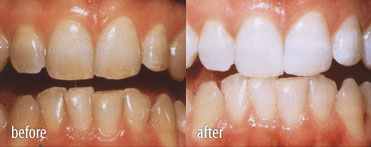 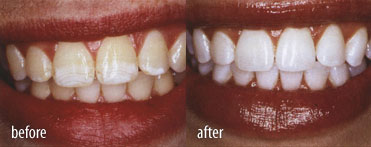 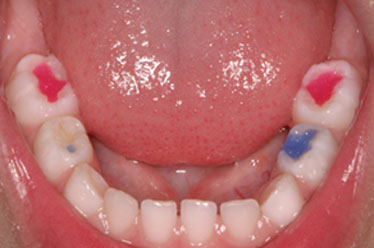 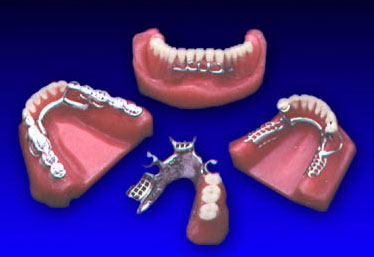 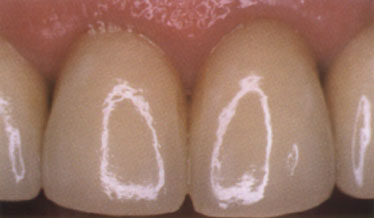  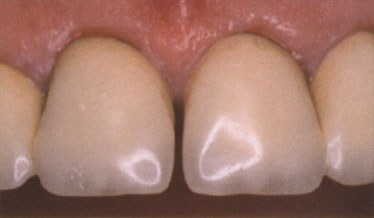  |
Q: What are the effects of whitening your teeth? Can it damage the teeth? A: If by whitening you mean a dentist-administered bleaching treatment, it is currently thought to present little risk except for some short-term soreness of the gums and a transient increase in tooth sensitivity to heat, cold, contact, and sweets. It is a relatively new technology, and the long term cumulative effects, if any, are not known. This may be significant, since bleaching may need to be repeated at indefinite intervals to maintain the whitening. The same degree of safety cannot be assumed for unregulated over the counter bleaching agents, due to the unknown nature of their content. Q: When should children start seeing a dentist regularly? A: The "company line" on this issue is to begin regular dental checkups when all 20 primary teeth have erupted; this is usually by age 2½-3. In our experience, children are usually difficult to manage below the age of 3½-4 years if anything other than a quick checkup is needed. This raises the question of whether an examination is justified if operative or therapeutic procedures, should they be determined to be necessary, cannot be performed due to inadequate patient cooperation. Some children are particularly precocious in their psychological development, and some dentists are gifted in child management skills; this may permit the successful performance of dental procedures at a very early age. Still, we recognize the traumatic nature of forcing a child into an experience before he is ready for it. We will generally advise parents to bring their child in for the first time at around age 4, but to use some discretion. If a child complains of oral symptoms or if there is something in the child's mouth that doesn't seem quite right, this merits a trip to the dentist at any age. Q: I am 26 and I am having problems with gum recession. How can I stop it? A: Gingival (gum) recession is due to a variety of physiologic and pathological factors. In order to determine an appropriate approach to management and prevention, a proper diagnosis must first be made. If there is periodontal (gum) disease, it must be treated professionally, since this is amenable to self-treatment at only the earliest stages. There are some pre-disposing factors to gingival recession which are not under either a patient's or dentist's control, such as the shape and position of the supporting bone relative to the root of a tooth. There may also be instances of gum recession resulting from poor tooth position, which may be effectively managed with orthodontic tooth movement (braces). If other causative factors have been eliminated, attention should be turned to oral hygiene technique. If a hard-bristle toothbrush is used, it should be exchanged for a soft nylon bristle variety. If an abrasive toothpaste is used (e.g., smoker's toothpaste), it should be dropped in favor of a milder type, such as any of the ADA-approved dentifrices. Finally, if you hold your toothbrush in a white-knuckled death grip and scrub until you're spitting out gum tissue, you should refine your technique to a light grasp, using a gentle, short-amplitude stroke. Once recession has occurred, it is prudent to attempt to limit any further progress. There are periodontal procedures intended to re-claim lost root coverage that have varying degrees of success; they are useful if the gum recession has produced a cosmetic deficit. Otherwise, you may need to deal with root surface hypersensitivity; this is usually manageable with one of the "sensitive teeth" toothpastes such as Sensodyne. Q: My son, age 24, has had one tooth pulled. Is it better to have an implant, or a bridge? A:it is true that if the teeth to either side of the missing tooth are over-filled or in bad repair, placement of a conventional fixed bridge (where the surrounding teeth are capped in order to support a false tooth) will not only replace the missing tooth but also strengthen its neighbors. But what of the situation where the neighboring teeth to be used as bridge abutments are in perfect physical condition and need no repair? Some dentists point out that this is a terribly aggressive and invasive way to support a bridge. They will offer that by placing an implant rather than such a bridge, they have offered a more conservative approach. What we can't understand is why cutting down these neighboring teeth, even if they are in "perfect" condition, is any less conservative than slicing open the gums and pulling out a plug of bone (not to mention all the waiting for healing). We know most of our patients would rather not have surgery. The placement of a conventional fixed bridge is not sexy new technology, but it works, and has a track record that stretches back further than implants. Insurance plans also seldom pay for implants, which makes a difference in our practice, anyway... Q: I need to go to the dentist, I know that. I have visible cavities in several of my teeth that I know need serious help.I don't want to end up with false teeth, but I get upset even thinking about enduring another trip to a dentist! A: You are not the only one who hates needles, holding your mouth open for long periods of time, who needs multiple anesthetic administration, and who hates situations in which self-control is relinquished to an extent. What distinguishes you and those like you is that through accumulated past experience and/or your personal temperament, you have developed an aversion sufficiently strong to deter you from treatment you know is necessary. We will not sugarcoat dentistry for you, but it is fair to say that objectively, you will perceive it to be far worse than it is due to your heavy psychological overlay. A caring, compassionate dentist will arrange for sufficient time for your appointments, allowing adequate time for sufficient anesthesia, mouth rinsing, resting, whatever you need within reason to get the job done. If this is still not possible, there are dentists who will render treatment under general anesthesia or sedation. There are always options. If you cannot bring yourself to make that appointment, there is always psychological counseling. Dental phobia is a common affliction. This is partially due to the nature of the treatment itself, and (unfortunately) partially due to the demeanor of some of its practitioners. In any case, you are certainly in good company. Q: What is TMJ? A: TMJ is an abbreviation for temporomandibular joint; the term is sometimes used to refer to maladies apparently centered around the functioning of this joint. The TMJ is the joint which permits movement of the lower jaw (mandible) relative to the bones it articulates with at the sides of the skull (the temporal bones). TMJ dysfunction (sometimes called MPD, or myofascial pain dysfunction) is a problematic, controversial diagnosis. It is generally a diagnosis made by a process of excluding other pain syndromes and pathologic states that have more objective signs and symptoms. It can manifest as pain, limitation of jaw movement, and joint noise. The causes are also poorly defined; the same factors that are frequently blamed are often found in subjects with no sign of disease. Demographically, it is predominantly found in adult females between the ages of 25 and 60 years. Due to the fact that the causes of TMJ dysfunction syndrome are poorly understood, the modalities of treatment are controversial, and may include night guards, bite adjustments, muscle relaxants, and physical therapy. As is the case in many chronic pain conditions that don't yield well to treatment, victims of TMJ are frequent targets of practitioners offering therapy of dubious virtue. This is understandable, since "mainstream" therapy can't offer much more... |
© Fildent 2010.
Petra Ćelovića 13/1, Užice
Tel: +381 31 514 895; +381 65 560 50 40
Petra Ćelovića 13/1, Užice
Tel: +381 31 514 895; +381 65 560 50 40






